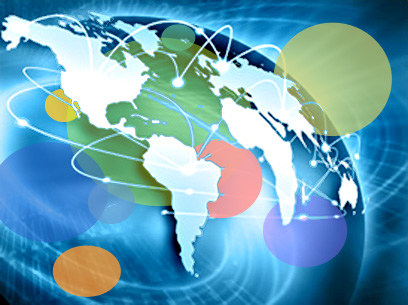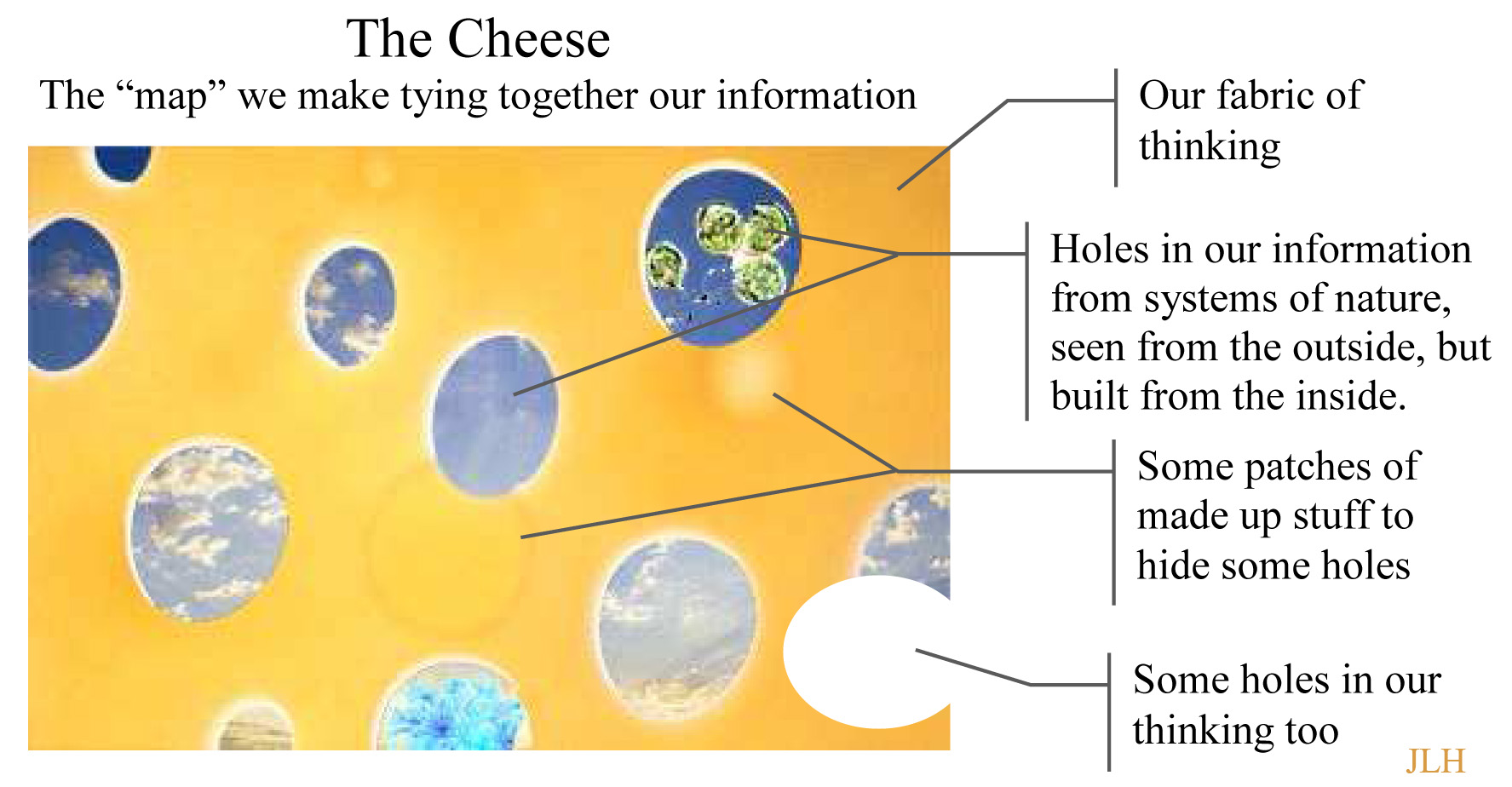The theme of the AAAS meetings next week in Vancouver is “Flattening the World: Building the Global Knowledge Society”.
Reality math combines the information we do have, with what definably remains missing from our view.
There’s a method of “reality math” that allows “whole system accounting“, to combine both what we know and what we can know is missing. That’s possible for systems defined by energy conservation. Failing to include what’s visibly missing from our data, often how energy is being used by systems that act as wholes, seems responsible for much of why our global solutions are not working, but create even more problems.
With all our information, “new math” is still needed for
what goes on within natural systems still remaining in the dark.
The following is a comment on society president Nina Fedoroff’s editoral in Science about it: The Global Knowledge Society. I certainly agree that global networking potentially allows global problem solving, but… There are “very large holes” in our information. The general “Natural Systems Theory” behind this view is a versatile scientific method, based on using the implications of the conservation of energy to locate and help study the wealth of complex natural organization hidden within the eventful systems by which our world works.
Ms. Fedoroff,
Thanks very much for your work, and editorial in Science on “The Global Knowledge Society”.
I’m a natural systems scientist, and found a remarkably curious pattern of large natural holes in the information we can observe about how our environments work. So a global knowledge society could use a way to at least accurately measure how much economic impact information we’re missing. It’s a lot.
Self-managing systems hide how they work internally, so their total effects remain hidden without a way to measure them as wholes.
Being unaware of these large holes in our information exposes us to quite large errors in representing how environmental systems work. Our reliance on observable information causes us to miss an amazingly important part of how the self-organizing systems of our world develop and operate, what’s inside them. It means in very many cases they are all but completely invisible to us as systems.
I’ve also had wonderful fun with productive new methods for overcoming that. Some do help make better models, but the best part has been developing new methods for how such self-organizing systems can be identified, studied and explored, more like organisms than as abstractions. It also results in exposing ultimately embarrassing oversights. That’s happened before, of course, as past discoveries embarrassed doctors using bloodletting to heal and astronomers describing planets on curlicue paths.
My best documented case is in my paper recently published “Systems Energy Assessment” [ http://synapse9.com/SEA/ ] in Sustainability (MDPI) with Charlie Hall’s collection of new papers on EROI. The “Reality Math” developed there solves the riddle of why our complex way of measuring the total energy required by businesses to operate typically gives results far below the easily verified average per $GDP.
The missing energy is found by exploring the natural holes in our information, to understand the energy uses devoted to any business product that go unreported and that SEA makes measurable! That also lets you begin exploring the things the unreported 4/5 of the total energy uses a business relies on are doing
…and why our energy problem is not at all what we thought!
___________
(see prior post too: Are the holes in your map helping you read the territory?)


